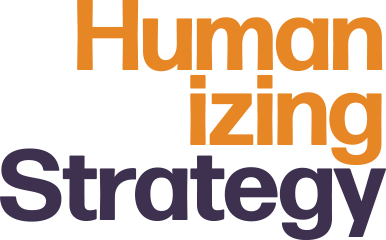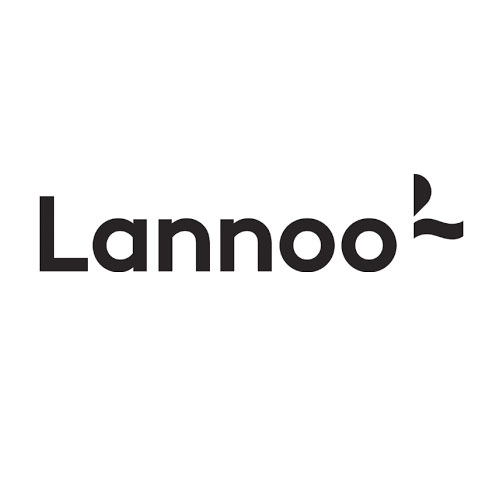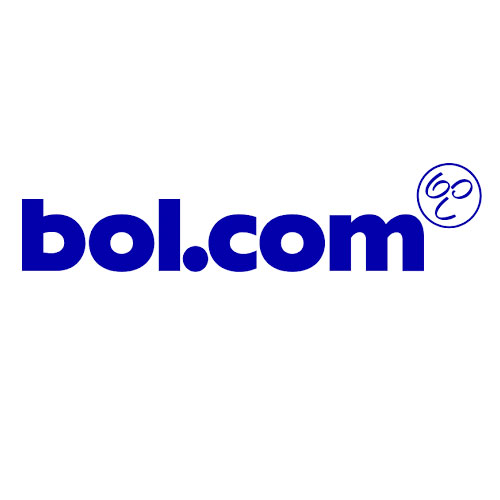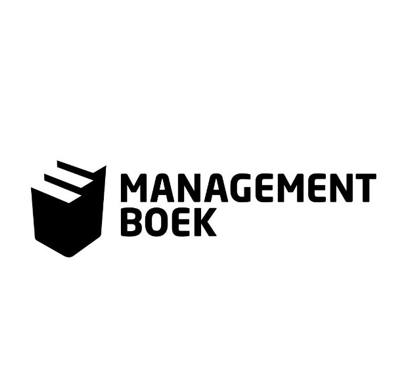- " We finally rediscover the true power of people to grow a business. This asks for a new style of leadership. Geert Vercaeren provides some compelling answers on how to humanize strategy." – STEVEN BAERT, CHIEF PEOPLE & ORGANIZATION OFFICER NOVARTIS
- " We finally rediscover the true power of people to grow a business. This asks for a new style of leadership. Geert Vercaeren provides some compelling answers on how to humanize strategy." – STEVEN BAERT, CHIEF PEOPLE & ORGANIZATION OFFICER NOVARTIS
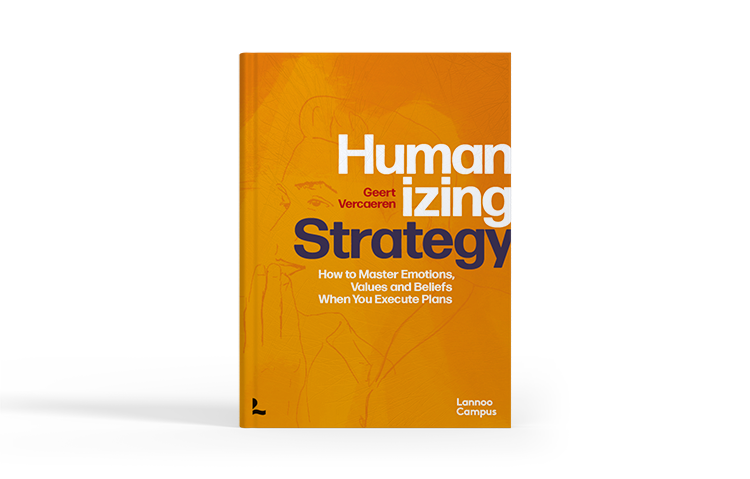
About The Book
Strategy execution is complex. Roughly 70 percent of transformation efforts fail. People in organizations struggle to focus on the right priorities, fail to act in accordance with the strategic objectives, or simply do not engage with the vision of the CEO. The financial losses resulting from failed strategy implementation are tremendous, not to mention the operational and emotional disruption to the organization and its people.
What if you could lead an organization where plans and decisions are executed; where a team acts as “one team”; where people work together spontaneously across teams? What if you could lead an organization where people are inspired and committed to the strategy? What if you could build an organization with efficiency, values, trust and fun at its heart?
Thinking is easy, acting is difficult, and to put one’s thoughts into action is the most difficult thing in the world.” – Johann Wolfgang von Goethe
Values, beliefs and emotions have a proven impact on human motivation and thus influence our focus, decisions and actions. Yet these elements are often neglected in the professional world, thereby dehumanizing strategies and organizations. Leading research shows that emotion-based barriers present a major threat to strategy execution within organizations. Mistrust and low sharing of useful and timely information, low receptivity to effortful change, mechanistic actions and complacency are examples of barriers that prevent the sense of urgency and commitment which is necessary for change to prevail. No business strategy can afford to neglect emotional and psychological factors, because all strategies ultimately deal with people.
This book provides you with new insights; an unconventional approach on how to humanize your strategy and make it really work. Based on leading research, real stories, case studies and practical tools, Geert Vercaeren takes you into the world of values, beliefs, emotions and often hidden underlying motivational forces that influence individual and collective behaviours in organizations. He shows how dealing consciously and effectively with these human dynamics, often neglected in the strategic process, significantly impacts the performance of your organization and the successful realization of your strategy.
Take a quick test to check if this book is something for you; answer the following questions with Yes or No:
- Are you serious about making your strategy a success?
- Do you have the patience to keep asking “why”?
- Do you have the courage to take a less conventional approach?
If you answered YES to these questions, you will find this book inspiring and useful.
A strong and compelling call to humanize organizations, teams, culture and leadership as a precondition for strategy execution. Drawing from system-psychodynamic theories and methodologies, Vercaeren provides a much needed manual for change that is both distinctive, in depth, encompassing and practical.
– ERIK VAN DE LOO, Professor of Organizational Behaviour, INSEAD Business School
Discover your priority challenges and hopes
The book is structured around the five challenges and hopes of today’s leaders. It will give you insights and practical tools on how to deal with these critical challenges by taking a human-centred approach; it will show you how to humanize your strategy and make it really work.
Looking at my organization today, the biggest challenges we have to realize our strategy are:
Chapter 1 on 'Humanizing TEAM performance' will interest you.
Your CHALLENGE: Much time, effort and energy of team members is sidetracked by emotions, tensions and conflicts
Your HOPE: A teams acts as ONE team
Summary of chapter 1
Effective teamwork is identified as one of the core practices in high-performing organizations. The ability to quickly build, deploy, disband, and reform teams is a critical skill for today’s organizations. The story “From me to we” shows that effort and time within teams is easily sidetracked by emotions, tensions, and conflicts. Unconscious dynamics are often a source of ineffectiveness in a team. The author elaborates on three less conventional, human-centred tactics, which he found highly impactful in building high-performing teams. Finally, he will provide you with practical tools to get started on acting as ONE team.
Chapter 2 on 'Humanizing COLLABORATION' will interest you.
Your CHALLENGE: Getting rid of the silos within my organization
Your HOPE: The people in my organization work together spontaneously across teams
Summary of chapter 2
Inter-group collaboration is often ineffective. It does not create the intended value and even destroys company value. In this chapter, we discuss the highly complex phenomenon of collaboration. The story “Us versus Them” shows that although the start of a collaboration can be conscious and rational, the process is often influenced by hidden emotional and unconscious motives and dynamics. The author elaborates on three less conventional, human-centred tactics that, in his experience, are highly impactful in helping teams to work together. Finally, he will provide you with practical tools to start getting rid of your silos.
Chapter 3 on 'Humanizing CULTURE shifts' will interest you.
Your CHALLENGE: People in my organization do not act and focus in accordance with our strategic objectives
Your HOPE: People act and focus in line with the strategy, set the right priorities and execute plans and decisions taken
Summary of chapter 3
"The way we do things around here”, or the culture of an organization, exerts a powerful influence on its success. Defining your desired culture is not that difficult. The story “Who needs to change first?” shows that the proof of the pudding is in the eating; embedding new behaviours is a challenging journey, but achievable. The author elaborates on three less conventional, human-centred tactics that he has seen to be highly impactful to shift towards desired behaviours supporting your strategy. Finally, he will provide you with practical tools to start getting your people to behave in line with your strategic objectives.
Chapter 4 on 'Humanizing LEADERSHIP' will interest you.
Your CHALLENGE: People in my organization do not engage with the vision I shared
Your HOPE: I inspire and create commitment to the strategy from within the organization
Summary of chapter 4
If the leadership dimension is not properly in place, organizations simply cannot be successful. Effective leadership corresponds directly with organizational performance; a single change in the behaviour of a leader could trigger a significant impact on the performance of the business, either positively or negatively. The story “Uncomfortable reflections” shows that reflection is not part of the dominant logic in our (professional) lives and that self-awareness is the essential starting point to trigger potential shifts in mindset and behaviour as a leader. The author elaborates on three less conventional, human-centred tactics that he experienced as highly impactful for leaders in inspiring and creating commitment to the strategy from within the organization. Finally he will provide practical tools to get you started in making this happen.
Chapter 5 on 'Humanizing future-proof ORGANIZATIONS' will interest you.
Your CHALLENGE: My organization is not ready to deal effectively with the rapidly changing challenges
Your HOPE: I have a future-proof organization based on efficiency, values, trust and fun
Summary of chapter 5
Organizations today operate in the context of increased complexity, uncertainty, and continuous change. How future work is organized within organizations and within the broader ecosystems is a significant accelerator in the performance of organizations. It significantly impacts future value creation, staying relevant and survival. The story “Speed, Gears and Brakes” shows how to build an organization that is able to deal effectively with the challenges of rapid change and to stay relevant in the future. The author elaborates on three less conventional, human-centred tactics that are highly impactful in building future-proof organizations. Then, he will give you the toolkit for building your future-proof organization based on efficiency, values, trust, and fun.
Looking at my organization today, investing in one or more of the following areas will have a positive impact on the successful realization of our strategy:
Chapter 1 on 'Humanizing TEAM performance' will interest you.
Your CHALLENGE: Much time, effort and energy of team members is sidetracked by emotions, tensions and conflicts
Your HOPE: A teams acts as ONE team
Summary of chapter 1
Effective teamwork is identified as one of the core practices in high-performing organizations. The ability to quickly build, deploy, disband, and reform teams is a critical skill for today’s organizations. The story “From me to we” shows that effort and time within teams is easily sidetracked by emotions, tensions, and conflicts. Unconscious dynamics are often a source of ineffectiveness in a team. The author elaborates on three less conventional, human-centred tactics, which he found highly impactful in building high-performing teams. Finally, he will provide you with practical tools to get started on acting as ONE team.
Chapter 2 on 'Humanizing COLLABORATION' will interest you.
Your CHALLENGE: Getting rid of the silos within my organization
Your HOPE: The people in my organization work together spontaneously across teams
Summary of chapter 2
Inter-group collaboration is often ineffective. It does not create the intended value and even destroys company value. In this chapter, we discuss the highly complex phenomenon of collaboration. The story “Us versus Them” shows that although the start of a collaboration can be conscious and rational, the process is often influenced by hidden emotional and unconscious motives and dynamics. The author elaborates on three less conventional, human-centred tactics that, in his experience, are highly impactful in helping teams to work together. Finally, he will provide you with practical tools to start getting rid of your silos.
Chapter 3 on 'Humanizing CULTURE shifts' will interest you.
Your CHALLENGE: People in my organization do not act and focus in accordance with our strategic objectives
Your HOPE: People act and focus in line with the strategy, set the right priorities and execute plans and decisions taken
Summary of chapter 3
"The way we do things around here”, or the culture of an organization, exerts a powerful influence on its success. Defining your desired culture is not that difficult. The story “Who needs to change first?” shows that the proof of the pudding is in the eating; embedding new behaviours is a challenging journey, but achievable. The author elaborates on three less conventional, human-centred tactics that he has seen to be highly impactful to shift towards desired behaviours supporting your strategy. Finally, he will provide you with practical tools to start getting your people to behave in line with your strategic objectives.
Chapter 4 on 'Humanizing LEADERSHIP' will interest you.
Your CHALLENGE: People in my organization do not engage with the vision I shared
Your HOPE: I inspire and create commitment to the strategy from within the organization
Summary of chapter 4
If the leadership dimension is not properly in place, organizations simply cannot be successful. Effective leadership corresponds directly with organizational performance; a single change in the behaviour of a leader could trigger a significant impact on the performance of the business, either positively or negatively. The story “Uncomfortable reflections” shows that reflection is not part of the dominant logic in our (professional) lives and that self-awareness is the essential starting point to trigger potential shifts in mindset and behaviour as a leader. The author elaborates on three less conventional, human-centred tactics that he experienced as highly impactful for leaders in inspiring and creating commitment to the strategy from within the organization. Finally he will provide practical tools to get you started in making this happen.
Chapter 5 on 'Humanizing future-proof ORGANIZATIONS' will interest you.
Your CHALLENGE: My organization is not ready to deal effectively with the rapidly changing challenges
Your HOPE: I have a future-proof organization based on efficiency, values, trust and fun
Summary of chapter 5
Organizations today operate in the context of increased complexity, uncertainty, and continuous change. How future work is organized within organizations and within the broader ecosystems is a significant accelerator in the performance of organizations. It significantly impacts future value creation, staying relevant and survival. The story “Speed, Gears and Brakes” shows how to build an organization that is able to deal effectively with the challenges of rapid change and to stay relevant in the future. The author elaborates on three less conventional, human-centred tactics that are highly impactful in building future-proof organizations. Then, he will give you the toolkit for building your future-proof organization based on efficiency, values, trust, and fun.
Blog
-
Interview Geert Vercaeren about his book Humanizing Strategy (on Boxring.tv)
Interview in Dutch
-
Official launch of book on Humanizing Strategy (by Geert Vercaeren)
Book on "Humanizing Strategy: How to Master Emotions, Values and Beliefs When You Execute Plans" officially launched on Feb 11th 2021
-
We are One
Humanizing Teams: Illustration We are One by artist Peter Moolan-Feroze.
-
The logic and structure of the book ‘Humanizing Strategy’
Visualization of the basic logic and structure of the book explaining how applying human-centred tactics significantly increases the success rate of your strategy execution.
